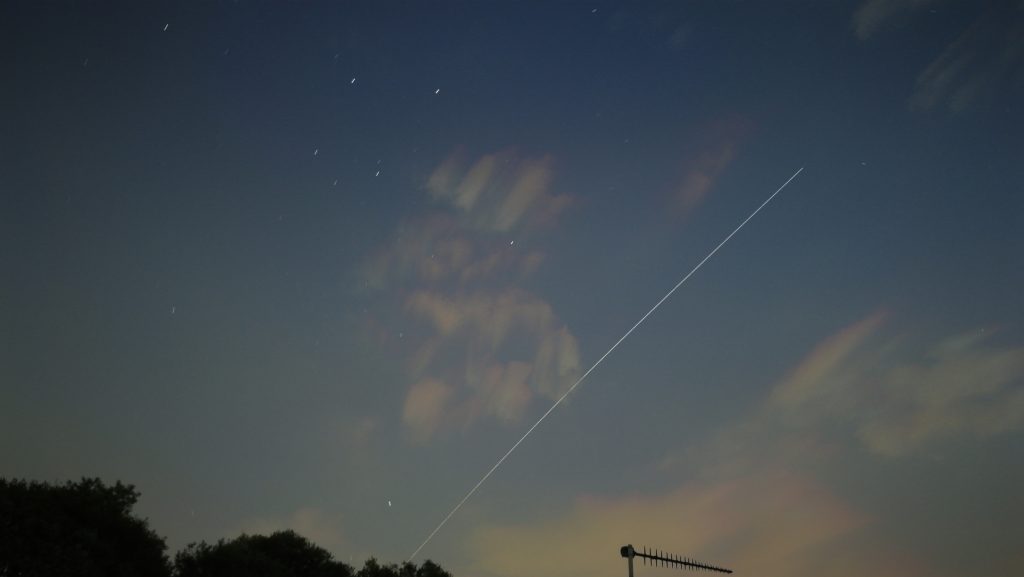Looking forward to taking pictures of the beautiful starry night with your brand new Pixel 4? With the added Night Sight feature, you certainly don’t need expensive DSLRs to get started! The Pixel 4 is equipped with state of the art cameras to help you capture stunning images of the stars, the Moon and everything in the sky (if you have enough patience, you could even capture constellations, more on this later). If you’re looking for a beginner’s guide, you most probably have already tried (with varying degrees of success) to capture the breathtaking celestial bodies with your Pixel. Here are some simple techniques that will give you a stellar final product when indulging in some Pixel 4 astrophotography.
If you’re looking to engage in astrophotography beyond your Pixel 4, perhaps with a telescope – check out our beginner’s guide to astrophotography.
Know your Camera
Understand that the phone in your hand is not the same as a DSLR, and will not give you the same effects as a professional camera. Your smartphone has a significant disadvantage when compared to a DSLR, as your phone’s sensor won’t capture nearly as much light as a DSLR’s lens does. That being said, the long exposure effect achieved using the night sight mode will make you achieve almost similar results as compared to a DSLR. Normally, on other androids, you’d need to download third-party apps and tune your exposure settings to trick your phone into capturing an image which is similar to a long exposure image. Pixel 4 has upgraded the night sight to a 4-minute maximum capture time from the 1-minute maximum of Pixel 3 and 3a, allowing astounding images to be captured.
Slow and Steady
Patience and a steady surface, are the keys to success when capturing the perfect photo. A tripod for your Pixel 4 astrophotography adventures is absolutely essential in order for you to capture most of the attractions. In case a tripod is not readily available, leaning your phone against a steady surface while using your headphone’s volume buttons to capture the photo will ensure that your camera doesn’t shake while it does its job. Taking pictures of the night sky using the Night Sight mode will take longer than the regular pictures you take, usually around 10 seconds for best results. Night Sight uses a slow shutter speed to capture as much light as possible from stationary sources over a period of time to give you a much more lightened image. However, any movement whatsoever will probably ruin your snap completely. Invest in a tripod if you want to capture pictures with really long exposure settings

Process Your Images
Post shoot editing will transform your pictures to the next level. Cropping, enhancing the picture by tinkering with the saturation, the hue, the temperature, etc., will help you bring the absolute best when it comes to Android astrophotography. It is worth investing some of your time to learn how to use the various editing apps available in the Play Store. Snapseed has proven to be one of the best editing apps available in the market, but try a few apps and choose the app which feels the most comfortable for you. If you can edit in a PC, or a laptop, with Adobe Photoshop, or Lightroom, do it, as it will definitely give you the best possible effect. Play around, practice and get yourselves familiarised with whatever mode of editing that you decide to go with.
Practice Astrophotography
Whatever be the skill that you want to learn, there is one specific thing which you have to do to get better at it. Practice. Get your phone out, choose a target, start taking photos, and edit them. Do not expect stunning photos from the get-go. Every bad pic you click is a learning experience. Understand why your picture is not ideal, and work on that the next time you go out and to click pictures. You will notice yourself getting marginally better with each picture that you click. Practice makes a man perfect. They weren’t kidding when they said that.
Pixel 4 Astrophotography Bonus Tip: Constellations

Constellations are majestic. Majestic targets can lead to majestic photos. All you need is a little bit of patience to bring out the best possible effect.
- The first step is to identify the constellation. Once you have, make sure that you lock the exposure (A maximum of 16 seconds) and focus settings, once the constellation is properly on the screen.
- Do not shake the camera when taking the picture, and try not to zoom.
- If you think that the constellation looks too small from your phone, you can always crop it while editing the picture to increase the size. Zooming in while capturing pictures on your smartphones can often lead to pixellation, which will ruin what might be an otherwise excellent picture.
Astrophotography on the Pixel 4 can be quite an experience if executed right. Here’s hoping astrophotography on Android phones in general is soon a reality too! Perhaps this could even lead to a rise in the number of amateur astronomers picking the best telescopes for themselves.

